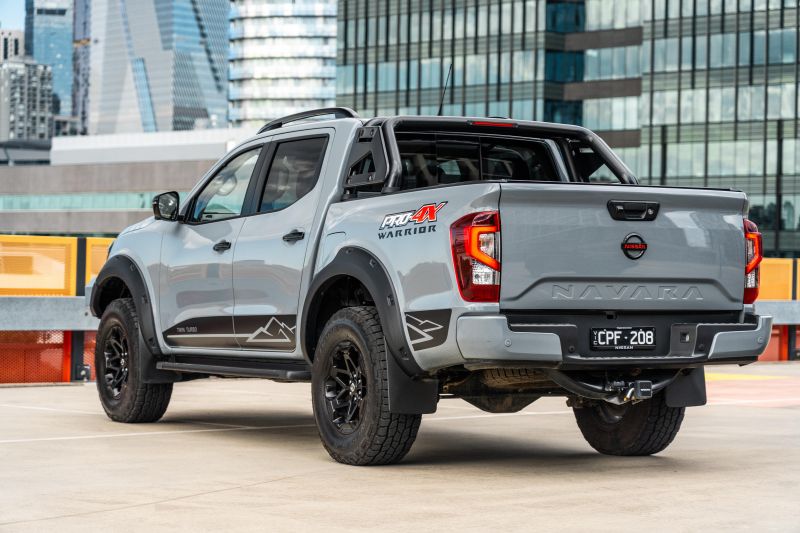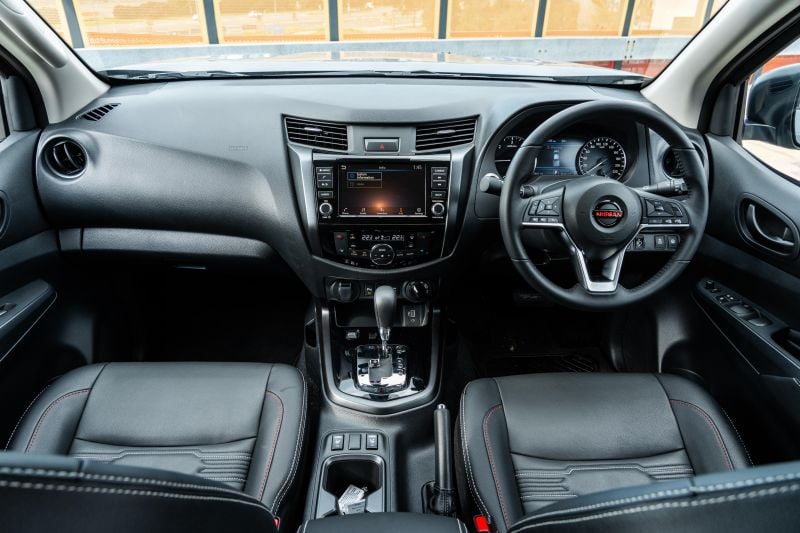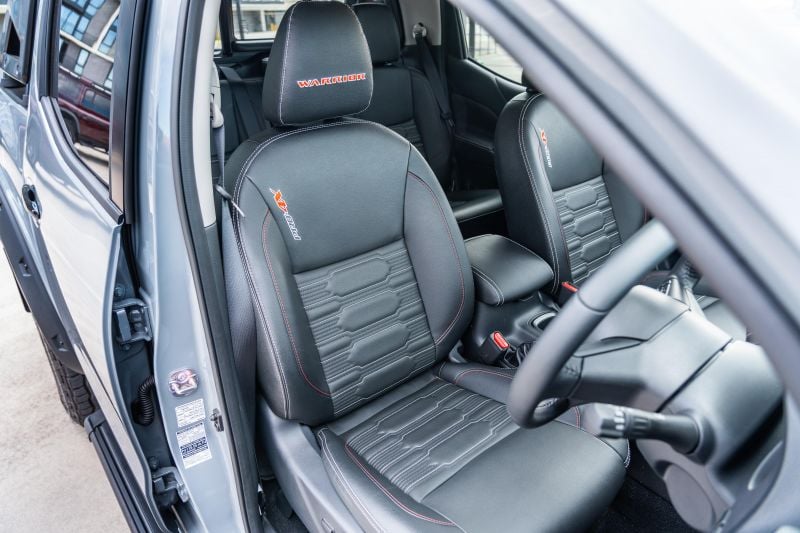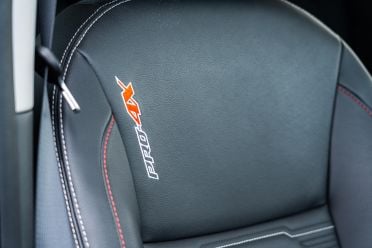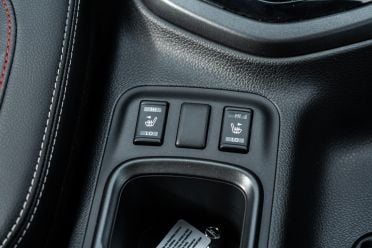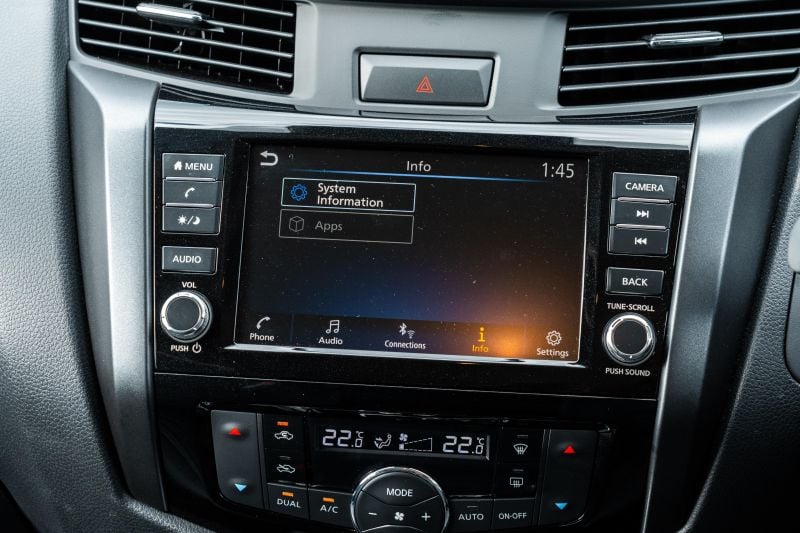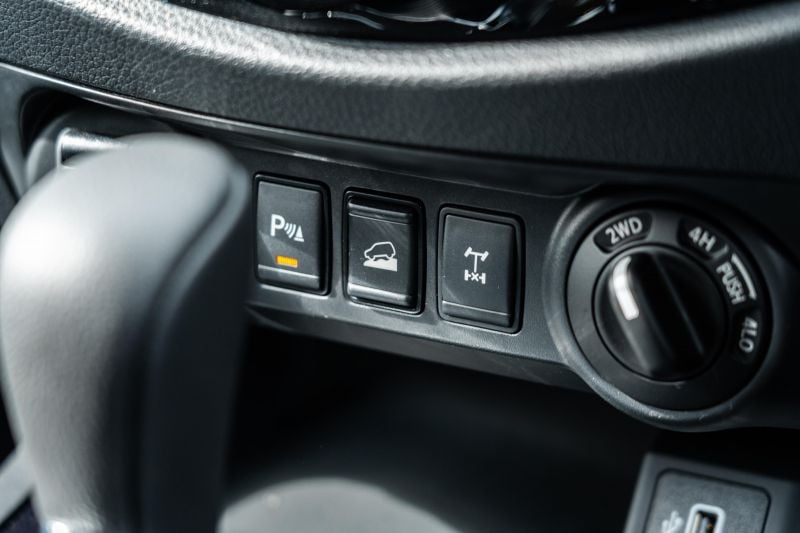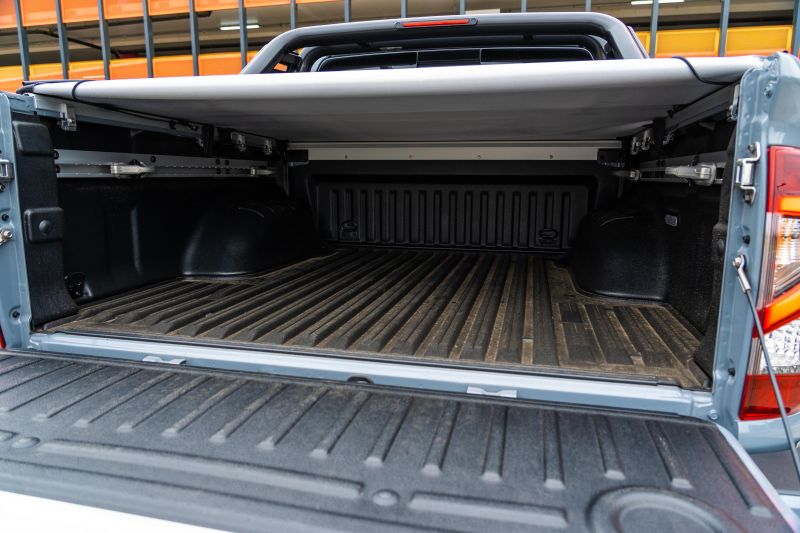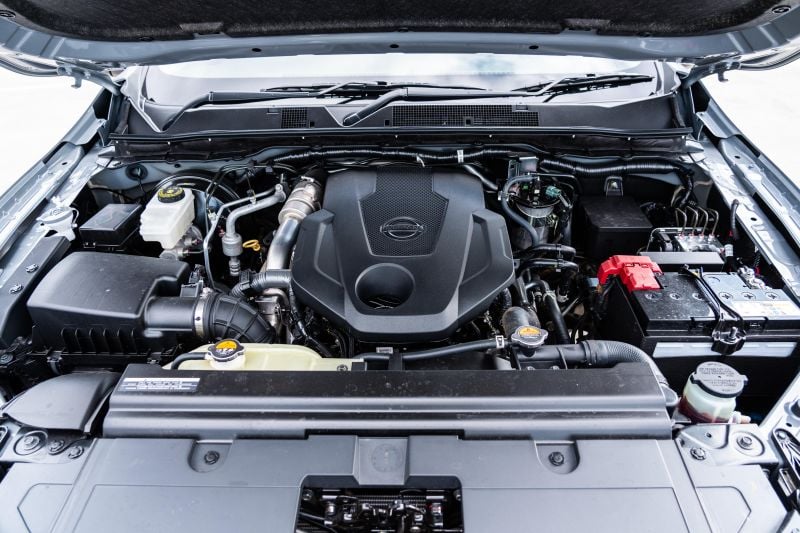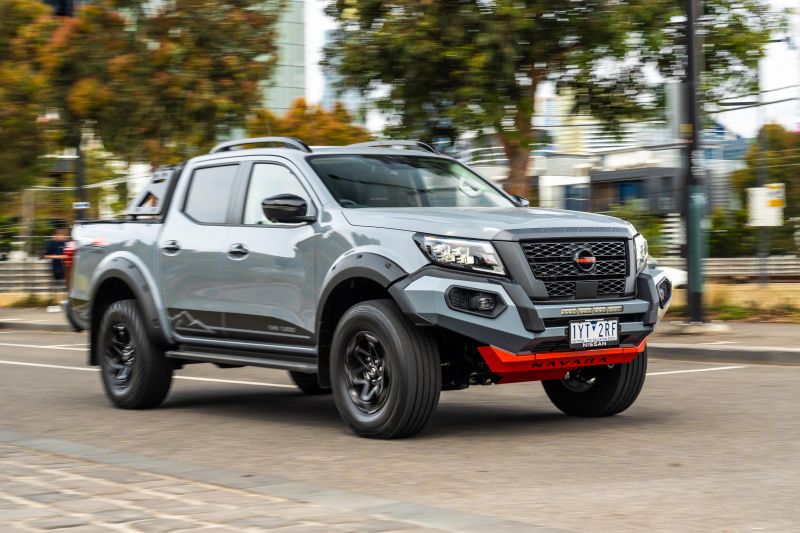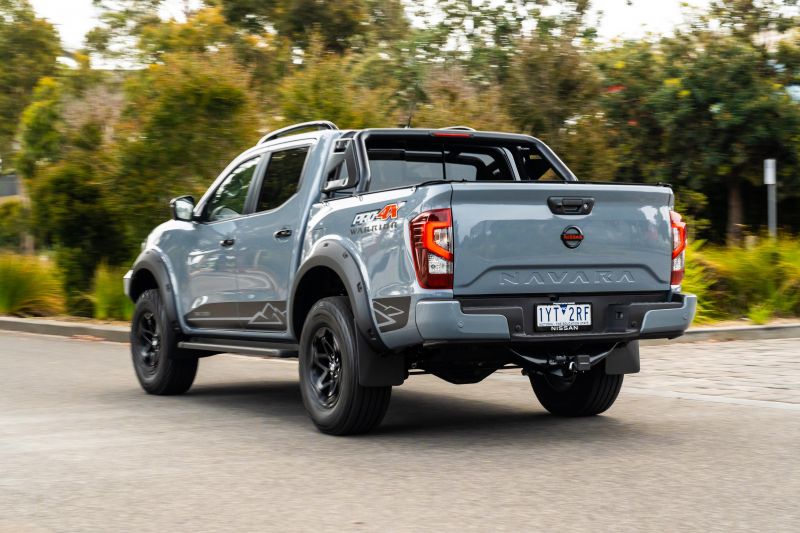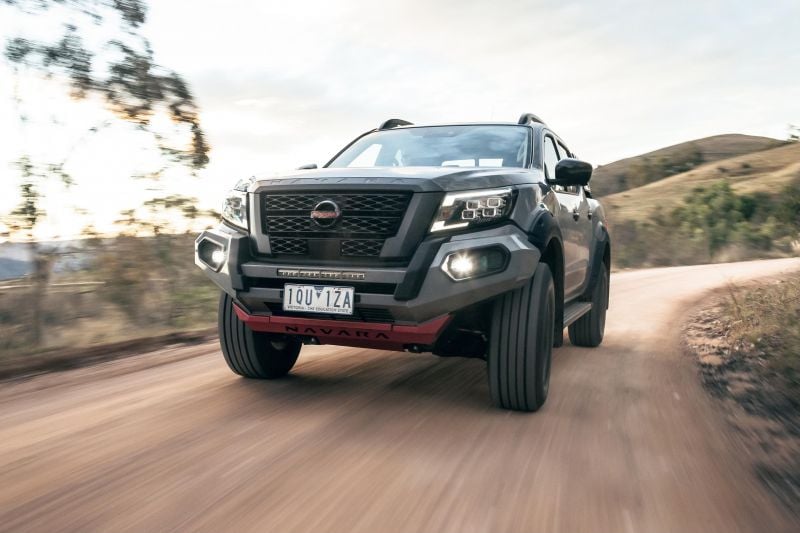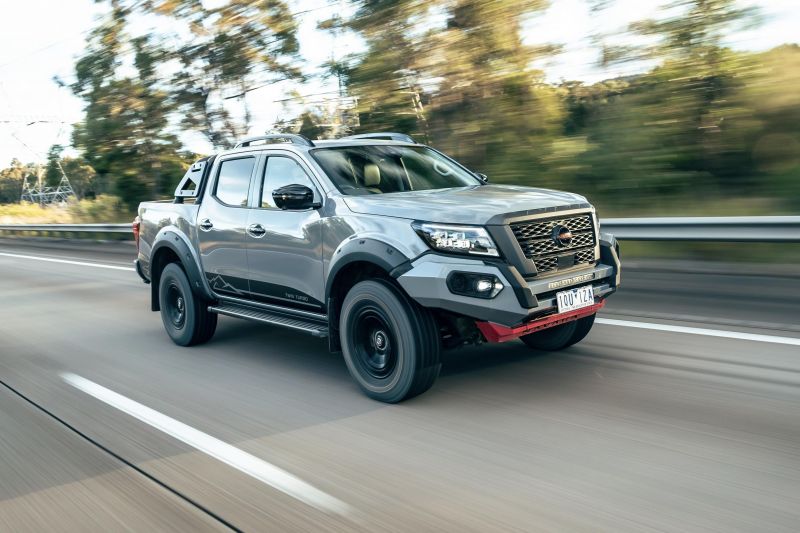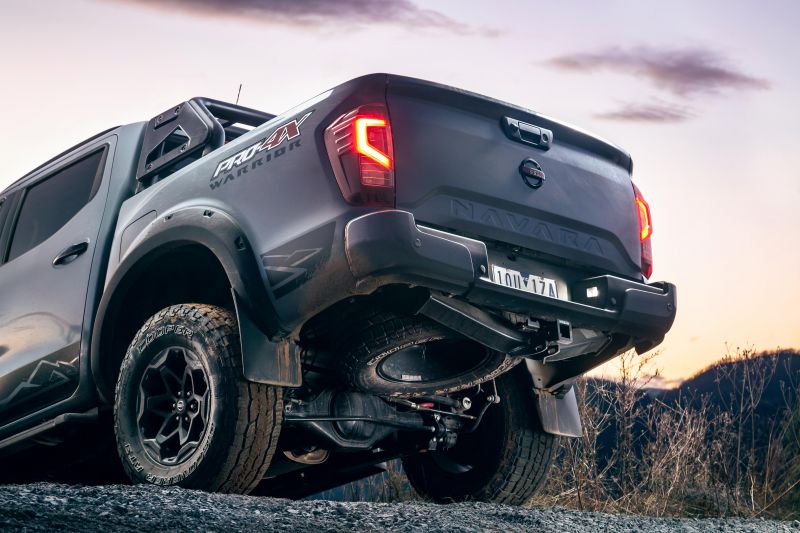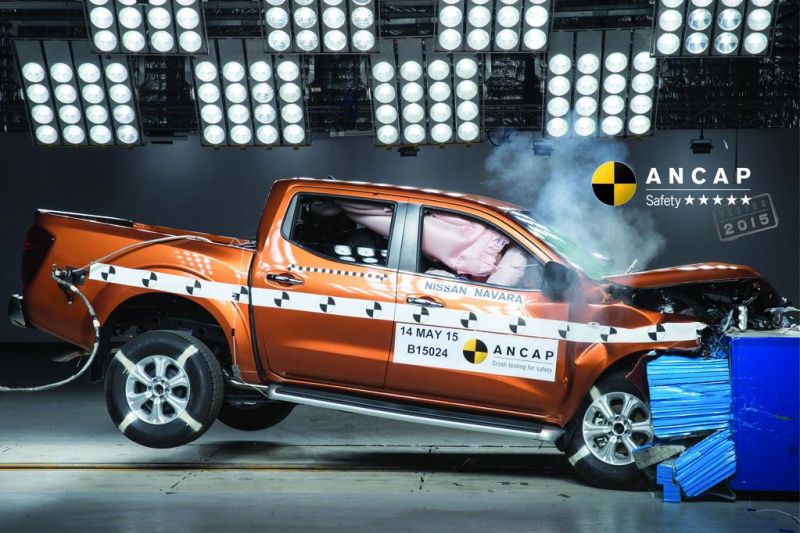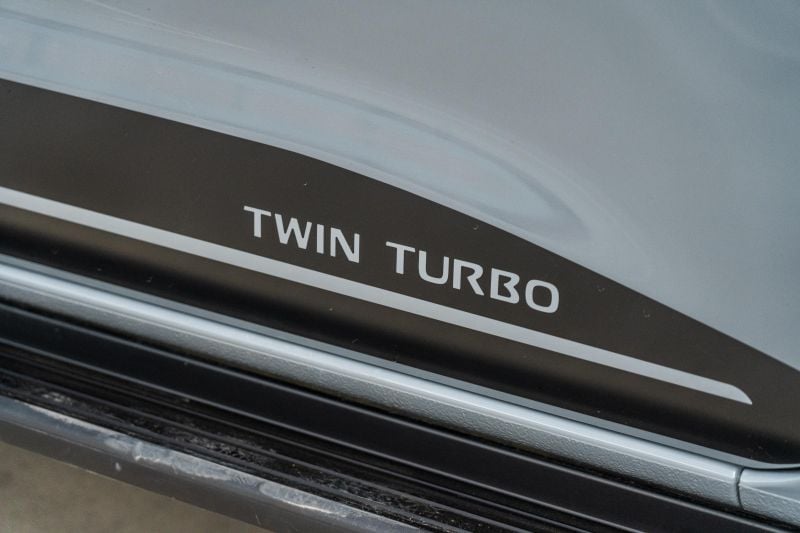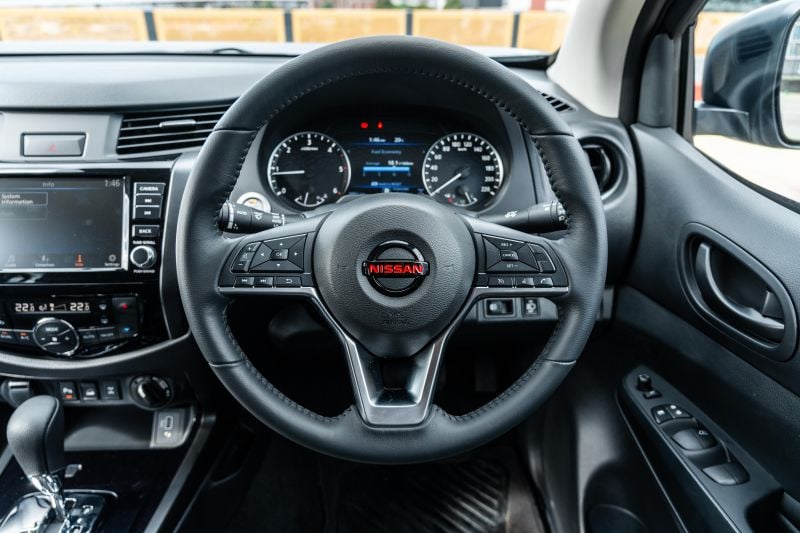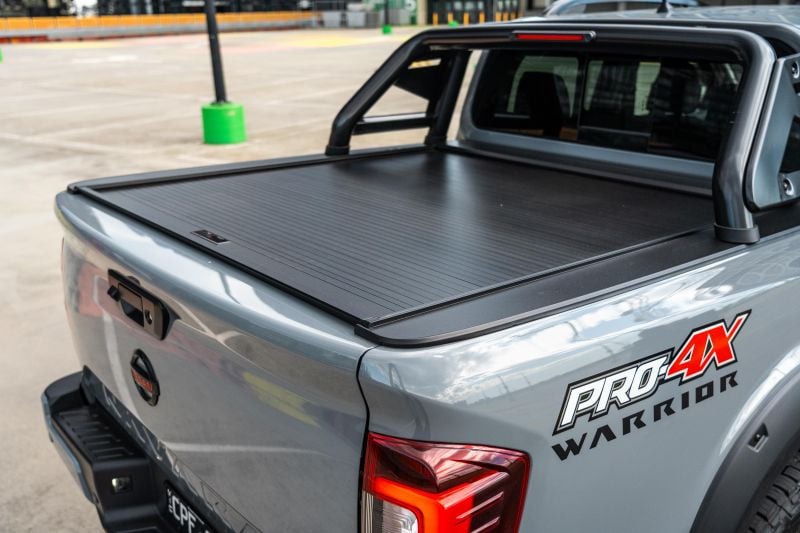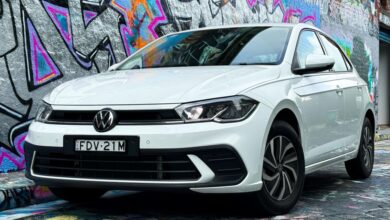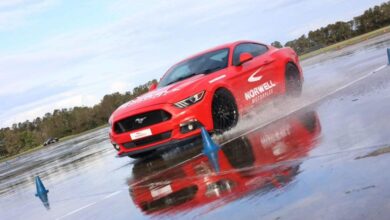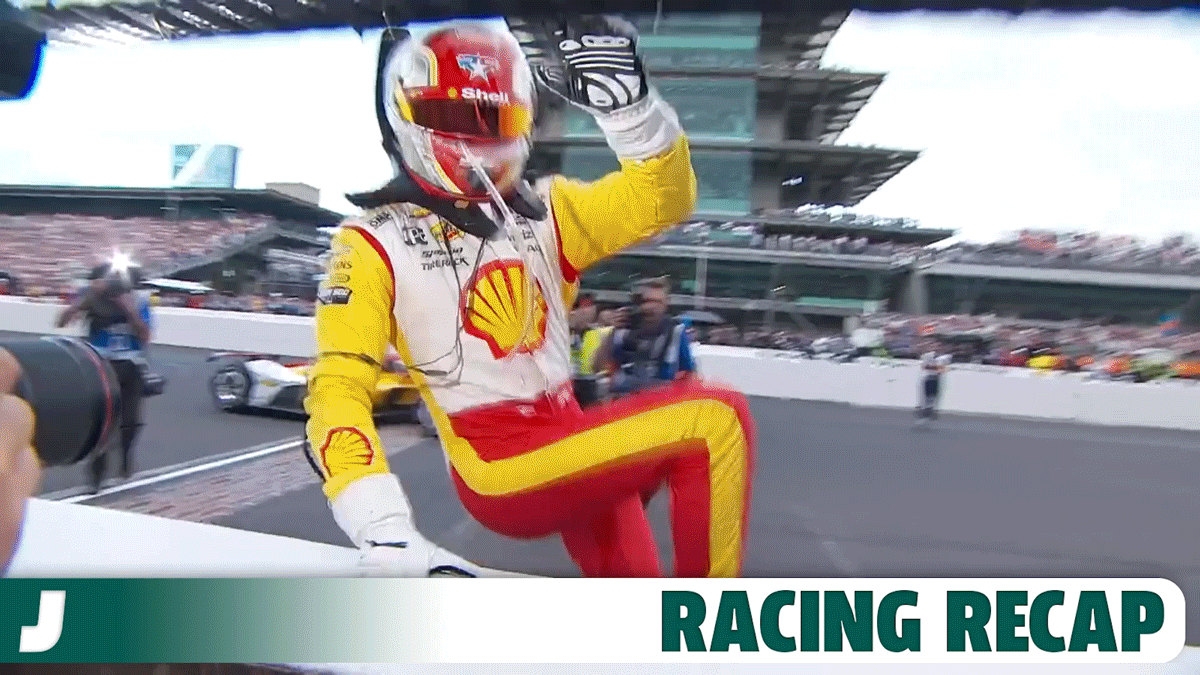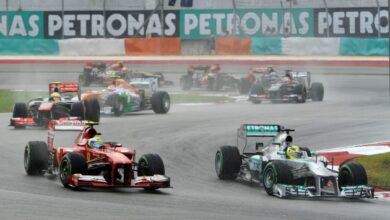2024 Nissan Navara PRO-4X Warrior review
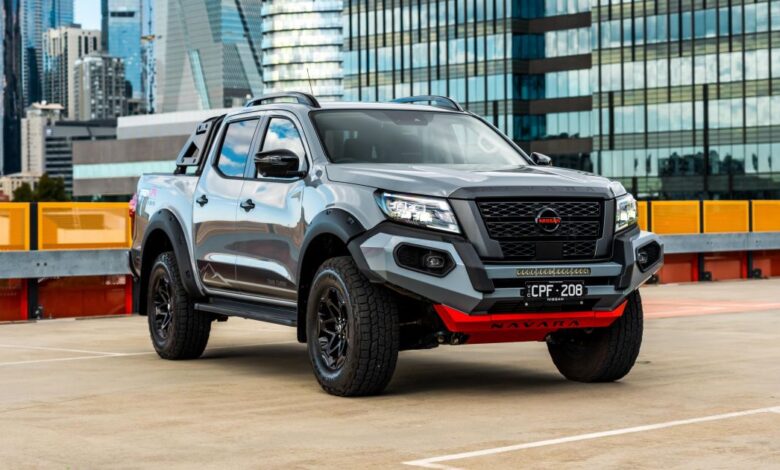
Nissan’s biggest beast is entering its third year on sale, and it’s just as tough as it was when it landed.
The Australia-only Warrior is built on the D23-generation Navara, which debuted in 2014 and received a tougher facelift in 2021. That means it’s getting on in years, and it’s showing its age.
On test here is the range-topping Navara PRO-4X Warrior, modified by Melbourne-based Premcar. Our tester was fitted with an automatic transmission, though you can get the same car with a manual – uncommon for modern higher-spec utes.
Modifications include beefy Cooper Discoverer all-terrain tyres, a winch-compatible bullbar with an integrated front light bar, under-body armour, and an upgraded suspension setup with a 40mm lift that means you can go straight from the showroom floor to the trails.
The next-generation Navara is reportedly due in Australia by early 2026, though there could be some last updates to the current model coming in the new few months.
Previous reports suggest the next Navara could share a platform with the new Mitsubishi Triton, following other ute partnerships like Ford Ranger–Volkswagen Amarok and Mazda BT-50–Isuzu D-Max.
Is the current Navara PRO-4X Warrior still worth a look in 2024, or should you hold out for the new version?
How does the Nissan Navara compare?
View a detailed breakdown of the Nissan Navara against similarly sized vehicles.

Nissan
Navara
How much does the Nissan Navara cost?
Our tester was the most expensive Navara variant money can buy, and the only one to come in at more than $70,000 before on-road costs.
Single Cab
| Model | Price before on-road costs |
|---|---|
| 2024 Nissan Navara SL 4×2 manual single-cab chassis | $33,550 |
| 2024 Nissan Navara SL 4×2 automatic single-cab chassis | $36,050 |
| 2024 Nissan Navara SL 4×4 manual single-cab chassis | $40,550 |
| 2024 Nissan Navara SL 4×4 automatic single-cab chassis | $43,050 |
King Cab
| Model | Price before on-road costs |
|---|---|
| 2024 Nissan Navara SL 4×2 automatic king-cab chassis | $40,050 |
| 2024 Nissan Navara SL 4×4 automatic king-cab chassis | $47,050 |
| 2024 Nissan Navara SL 4×4 automatic king-cab chassis | $48,550 |
| 2024 Nissan Navara SL 4×4 automatic king-cab pickup | $48,850 |
| 2024 Nissan Navara ST-X 4×4 automatic king-cab pickup | $58,945 |
Dual Cab
| Model | Price before on-road costs |
|---|---|
| 2024 Nissan Navara SL 4×2 manual dual-cab pickup | $40,850 |
| 2024 Nissan Navara SL 4×4 automatic dual-cab pickup | $43,350 |
| 2024 Nissan Navara SL 4×4 manual dual-cab chassis | $46,050 |
| 2024 Nissan Navara SL 4×4 manual dual-cab pickup | $47,850 |
| 2024 Nissan Navara ST 4×2 automatic dual-cab pickup | $48,455 |
| 2024 Nissan Navara SL 4×4 automatic dual-cab pickup | $50,350 |
| 2024 Nissan Navara ST-X 4×2 automatic dual-cab pickup | $51,945 |
| 2024 Nissan Navara ST 4×4 manual dual-cab pickup | $52,945 |
| 2024 Nissan Navara ST 4×4 automatic dual-cab pickup | $55,445 |
| 2024 Nissan Navara ST-X 4×4 manual dual-cab pickup | $56,445 |
| 2024 Nissan Navara ST-X 4×4 automatic dual-cab pickup | $58,945 |
| 2024 Nissan Navara SL Warrior 4×4 manual dual-cab pickup | $59,250 |
| 2024 Nissan Navara PRO-4X 4×4 manual dual-cab pickup | $59,405 |
| 2024 Nissan Navara SL Warrior 4×4 automatic dual-cab pickup | $61,750 |
| 2024 Nissan Navara PRO-4X 4×4 automatic dual-cab pickup | $61,905 |
| 2024 Nissan Navara PRO-4X Warrior 4×4 manual dual-cab pickup | $68,765 |
| 2024 Nissan Navara PRO-4X Warrior 4×4 automatic dual-cab pickup | $71,265 |
To see how the Nissan Navara stacks up against its rivals, use our comparison tool.
What is the Nissan Navara like on the inside?
Given the 10-year old Navara platform on which it’s based, it’s not surprising the interior of the PRO-4X Warrior is looking dated.
The main thing you’ll notice is how utilitarian it is in appearance. Nearly every large surface is plastered in hard, scratchy plastic, which will certainly be durable as time with the car ticks by… but has aged the car alongside the more luxurious new Ranger.
What doesn’t make sense is the use of gloss black plastic. While it seems menial, we don’t like its inclusion in a car like this. It may look nice when new, but if you’re going to be moving things in and out of the cabin regularly it’ll get scratched up in no time.
You’ll find it primarily around the chrome-accented traditional gear selector, but at least there’s next to no reason to be touching the area too often. Besides the small button blank, the sole switch on the panel is the one for drive mode on the far left, which is difficult to reach comfortably as the driver.
There’s some more gloss black surrounding the infotainment and climate controls, though the buttons are made of dull plastic as key touch points. If you look closely, you’ll also notice a faint metallic sparkle to the glossy bezel – nice if you’re into that.
The rest of the cabin is simple in its presentation. Hard plastic can be found all over the dash, centre console, and door cards. Even the mechanical handbrake handle is just hard plastic, but the traditionalist in me thinks it’s good to still have a physical lever in a car like the Navara.
The steering wheel buttons feel sturdy and operate with a solid action, and while more of that hard plastic appears in the centre of the wheel it’s nice to have that blacked-out Nissan badge with red lettering in front of you. It, and the badges on the outside, still feature the pre-2020 Nissan logo in case you missed having it around.
Plastic continues elsewhere too, including the interior door handles. There’s an A-pillar grab handle to help you climb into the front of the cabin too, though only on the passenger side.
Behind the wheel is a straightforward instrument cluster, which comprises two large analogue dials for your tachometer and speedometer flanking a central information screen.
While that screen is far from the highest-resolution display you’ll find on any instrument cluster, there’s loads of information presented here depending on which menu you have selected. Those menus can be cycled through using the buttons on the wheel.
The two large dials also incorporate small temperature and fuel level gauges, and generally what you see is what you get. I like the direct approach here; Nissan doesn’t try to cram in any unnecessary decorations or animations that would get in the way.
There’s also no guessing when it comes to fiddling with the driver assist tech or off-road mechanisms, as there are clear icons on that information screen that tell you exactly what is and isn’t in action when you start pressing buttons.
Fittingly, the seats are the nicest part of the cabin by some margin. They feature leather-accented upholstery with intricate red, white, and black stitching and PRO-4X Warrior-specific embroidery, and they’re comfortable to sit in on longer drives.
Premcar says they’re intended to be “hard-wearing”, but that doesn’t mean you miss out on some nicer seating luxuries.
The driver’s seat still includes powered adjustment and lumbar support, alongside heating for both front seats via two chunky switches.
The same white-stitched upholstery is also used on the lid of the centre console storage box, which is adequate in size. Other storage up front includes the typical passenger-side glovebox, two large central cupholders, and bottle holders in the door cards.
Nissan has also included two plastic pockets on either side of the centre console, either one of which is a perfect place to store the key fob or phones when you’re on the road.
The infotainment display is falling behind by today’s standards. It’s an 8.0-inch display as you’ll find in the rest of the Navara range – disappointing as it’d be nice to have a larger screen in the more expensive variants.
Flanking it are eight buttons and two dials, which are all clearly labelled for the key infotainment functions.
It’s a low-resolution against something like an Amarok, and it can feel cluttered when you’re trying to navigate using touchscreen function. Everything you need is still there, it can just take a moment to find specific menus or settings.
Unfortunately there’s no wireless smartphone mirroring, and you’ll instead need to bring a USB-A cable with you if you want to hook up your phone. You do at least get the reliability of a hardwired connection, and we saw no glitches with the system in our week with the car.
Elsewhere, you’re limited for phone charging options. There’s no wireless charging pad up front, and while there is a phone storage cubby it’ll only just fit a standard iPhone 12 – so long as you’ve taken its case off.
Other charging options include that single USB-A port or the 12-volt outlet up front, or you can open up the centre console storage box to reveal additional USB-A, USB-C, and 12V outlets. You even still get an AUX plug for phone audio, telling of the car’s age.
In keeping with the infotainment layout, there are clear buttons around the cabin for many of the car’s key functions.
These include three central buttons for parking sensors, hill descent control, and differential lock, as well as three to the right of the steering wheel for driver assist function, traction control, and the Warrior-specific front light bar.
There’s a large rotary switch ahead of the gear selector for 4WD drive modes, as well as a discreet switch to the right of the wheel to open or close the Warrior’s powered rolling tub cover.
All of these functions are clearly labelled and easy to find, which means you won’t have to spend extra time trying to understand what everything does if you’re ever in a pinch.
The two most expensive standard Navara variants offer dual-zone climate control, which is controlled via the central interface below the infotainment display.
Everything here is clearly labelled and easy to operate, as it’s dominated by large buttons surrounding a small LCD display. It’s dated in its layout, but I’d happily take a well-functioning older-looking system over any touchscreen-only setup.
It’s a small climb to get into the second row of the Navara, but it’s made easier by side steps running the length of the cabin. You can pull yourself in using the rear-facing grab handles on the B-pillars too, and it’s all made easier by reasonably sized rear doors that reveal comfortably wide openings.
The second bench offers the same stitching you get up front, and they’re comfortable enough – although they’re a bit flat. There’s loads of headroom, legroom, and toe room, and I could sit comfortably behind my own average-height driving position with room to spare.
While the floor is mostly flat, it’s interrupted by a small driveline hump but it isn’t large enough to cause any real inconvenience. When the surprisingly wide middle seat isn’t being sat on, you can fold down the central armrest to reveal two cupholders.
Other amenities in the rear include a singular USB-A port on the back of the centre console, next to a notch that seems too small to be useful for storing anything; though you could probably put a phone there if you really needed to. Above that are two air vents, and that’s about all there is to keep rear passengers comfortable.
It’d be wrong to go without mentioning the tub out the back, which in our tester was fitted with some extra goodies that improve the standard Warrior package.
As standard there’s the beefy black sports bar up top, as well as large dedicated badging and an embossed Navara logo on the tailgate – not to mention the unique decals on the sides of the car.
Unlike the standard Warrior, our tester featured an electric rolling tub cover made by Victorian-based company HSP, which can be controlled by the interior switch, the key fob, or a control panel on the tub’s front-left corner.
It’s a nice bonus and improves protection against break-ins, and when it’s fully open a bright LED light bar turns on at the front of the tub. The only issue is the cover mechanism and light eat into space at the front, and it means you can’t access the full vertical capacity beneath the sports bar.
You still get plenty of space to carry things around in here though, which means the Warrior has done well to maintain the Navara’s practicality beneath the tougher skin.
| Dimensions | Nissan Navara PRO-4X Warrior |
|---|---|
| Length | 5350mm |
| Width | 1920mm |
| Height | 1895mm |
| Wheelbase | 3150mm |
| Cargo bed length | 1509mm floor, 1469mm top |
| Cargo bed width | 1560mm floor, 1490mm top (1134mm between wheel arches) |
| Tailgate opening width | 1360mm |
| Cargo bed depth | 519mm |
To see how the Nissan Navara stacks up against its rivals, use our comparison tool.
What’s under the bonnet?
The Navara range is powered by a pair of 2.3-litre turbo-diesel four-cylinder engines mated to either manual or automatic transmissions. Our tester was fitted with the twin-turbo option, mated to a seven-speed automatic.
Four-wheel drive variants have a part-time four-wheel drive system with low-range and an electronically locking rear differential.
| Specifications | Nissan Navara PRO-4X Warrior |
|---|---|
| Engine | 2.3L turbo-diesel 4cyl |
| Power | 140kW @ 3750rpm |
| Torque | 450Nm @ 1500-2500rpm |
| Transmission | 7-speed automatic |
| Drive type | 4WD with selectable low-range |
| Fuel economy (claimed) | 8.1L/100km |
| Fuel economy (as tested) | 9.9L/100km |
| CO₂ emissions (claimed) | 213g/km |
| Fuel tank | 80 litres |
| Weight | 2298kg (kerb) |
| Payload | 952kg |
| Braked towing capacity | 3500kg |
| Gross vehicle mass (GVM) | 3250kg |
| Gross combination mass (GCM) | 5910kg |
To see how the Nissan Navara stacks up against its rivals, use our comparison tool.
How does the Nissan Navara drive?
If you thought the Warrior looked big, wait until you get behind the wheel.
Anyone used to driving a passenger car could (understandably) feel intimidated at the prospect of driving a car as tough-looking as this, but once you’re out and about you’ll find it’s all surprisingly familiar.
Besides parking and navigating tighter areas, there are no strange feelings you wouldn’t expect from a ute like this.
Firing up the engine is accomplished via the button to the left of the wheel, which glows red when the headlights are on. Just note the engine won’t turn on as soon as you press the button, because it’ll take a moment to warm its glow plugs before it fires up.
Slide the gear selector down and into drive to get moving, but if you’re pulling out of a tight space it’s worth making sure you’ve brought your gym equipment.
The steering is heavy at low speed on account of those chunky all-terrain tyres, coupled with the fact it doesn’t have any electronic assistance under the skin. It’s still a hydraulic power-steering system, which comes with compromises in everyday driving.
That diesel powertrain brings with it a noisy soundtrack, which is especially noticeable on first startup and under hard acceleration. It does quieten down once things warm up, and once you’re rolling you can start to take in the Warrior’s upgrades.
Beyond contributing to the heavy steering, the upgraded suspension hardware – which are standard on the non-Warrior PRO-4X – allow the car to better handle smaller imperfections like speed bumps.
It’s hard to look past the typical ute construction though, because it has a tendency to clatter over bumps at higher speed while clearly relaying any imperfections directly into the cabin.
That’s not to say it rides poorly, but it would be greatly improved by adding weight to the tub like cargo. It’s already quite a heavy vehicle at nearly 2.3 tonnes, but some extra weight at the rear would make it easier for the upgraded suspension to compress as needed, ironing out bumps.
One of the Warrior’s choice additions is the 40mm suspension lift, and you certainly notice it when you’re out on the road. It’s a commanding driving position behind the wheel, and you feel like you are well above most of the other cars on the road.
That means it’s easy to know exactly where you’re placing the car, and blind-spot monitoring helps to avoid running other people off the road when you go for a lane change. Because of its size and your height above the road, it’s hard not to feel like you’re untouchable.
The high driving position is complemented by good visibility all around, and it’s easy to do head checks thanks to the unobstructed rear side windows. Even visibility out the rear view mirror isn’t terrible, though it’s possible you’ll notice some glare on the rear window from the infotainment display at night.
There are some other tendencies to keep an eye out for behind the wheel. The all-terrain tyres, while off-road ready, tend to create more road noise than you might be used to. It’s nowhere near the roar of chunky mud-terrains, but it is still noticeable.
Extra rubber between the car and the road also means the car will sometimes follow cambers in the road, requiring the driver to hold the steering wheel at a slight angle to continue on straight.
Put your foot into it from a standstill and the Navara takes off in a spritely manner. That’s because first and second gear are both relatively short, allowing the engine to rev up quickly when needed.
Beyond that though, the Navara begins to lose its advantage as it climbs into the higher gears. It’s not necessarily slow, but we’d like it to be quicker than it is.
With 140kW and 450Nm it’s down on something like a Ford Ranger Bi-Turbo (154kW, 500Nm) or a Toyota HiLux SR (150kW, 500Nm), and while that’s not massive on paper it does make a difference in the real world.
You’ll notice how other cars start to pull away when you climb past 50km/h. You’ll also notice it making a fair bit of noise without actually moving away faster when you put your foot down on the highway, which again suggests to us that it would benefit from some kind of power boost.
At least the transmission is a quality unit, evidenced by its ability to smoothly shift when it should rather than stumbling and second-guessing.
Its seven gears mean you have plenty of range for low-RPM highway cruising, though that didn’t help us in getting close to Nissan’s fuel economy claim.
We’ll caveat that by saying our week with the car was plagued by heavy traffic both on the freeway and in suburban areas, in which settings the Navara drinks a fair bit more fuel than we’d want it to.
Our previous reviews of the car share the same sentiment, and we’ve seen Navara fuel economy figures above the 10L/100km mark. Some of that could be down to the added weight of the tyres, bumpers, and under armour on the Warrior, which hasn’t been given its own economy claim by Nissan.
From a general perspective, it’s a solid car to drive on the road. It has basic driver assist tech like non-adaptive cruise control, lane departure warning, and selectable lane-keep assist, though the latter uses the car’s brakes to make corrections which can be unsettling.
It also has one particular on-road quirk in that it doesn’t have a footrest for your left foot. As most other cars have one I found myself searching for one in vain, which may be a result of the clutch pedal’s location in manual-equipped models.
Apart from that, the Warrior-specific upgrades are worthwhile. That unique bumper with its red lower portion not only looks the part, but that LED bar it houses is very nice to have.
In regional areas at night the standard high-beams do an exceptional job in lighting up the way ahead, but flicking the switch to activate the light bar makes it like it’s almost daytime ahead. It’s reassuring to be able to see everything ahead without having to go through the hassle of an aftermarket job.
| Off-road dimensions | Nissan Navara |
|---|---|
| Track front and rear | 1570mm |
| Ground clearance | 220mm |
| Approach angle | 32 degrees |
| Departure angle | 19.8 degrees |
| Ramp breakover angle | 22.9 degrees |
| Wading depth | 600mm |
To see how the Nissan Navara stacks up against its rivals, use our comparison tool.
What do you get?
There are six distinct grades of Navara, each with unique equipment additions over the preceding variant.
Navara SL equipment highlights:
- 17-inch steel wheels
- Full-size spare steel wheel
- Automatic halogen headlights
- Power-adjustable side mirrors
- Tailgate assist (pickup only)
- 8.0-inch touchscreen infotainment system
- Wired Apple CarPlay and Android Auto
- Bluetooth
- 7.0-inch digital trip computer with digital speedometer
- Vinyl floors (single cab and dual cab only)
- Carpet floors (king cab only)
- Cloth upholstery
- Outboard rear seat ISOFIX points (dual cab only)
- Trailer sway control
- Hill descent control (4×4 only)
- Hill start assist
The SL Warrior adds the following:
- Winch-compatible hooped bullbar
- Integrated LED lightbar
- Branded underbody black bash plate
- 275/70 R17 Cooper Discoverer All Terrain AT3 tyres
- 40mm suspension lift
- Tow bar
- 100kg GVM upgrade (3250kg)
- New springs, dampers and jounce bumpers
- Fender flares and tub liner
- All-weather floor mats
The ST adds the following on top of the base SL:
- 17-inch alloy wheels
- LED headlights
- LED fog lights
- LED tail lights
- Automatic high-beam
- Privacy glass
- Power sliding rear window
- Rain-sensing wipers
- Heated side mirrors
- Single tube sports bar in polished stainless steel
- Drive mode selector (4×4 AT only)
- Off-road monitor (4×4 only)
- Satellite navigation
- DAB+ digital radio
- Leather-accented steering wheel
- Leather-accented shifter
- Carpet floors
- Anti-dazzle rear-view mirror
The ST-X adds:
- 18-inch alloy wheels
- Full-size alloy spare wheel
- Double tube sportsbar in polished stainless steel
- Sliding in-tray tie-down hooks
- Towbar
- Tub liner
- Proximity entry with push-button start
- Dual-zone climate control
- Tyre pressure monitoring
- Carpet floor mats
The PRO-4X adds:
- 17-inch black alloy wheels
- All-terrain tyres
- Full-size steel spare wheel
- Black fender flares
- Black roof rails
- Black-painted side mirrors, side steps, grille and door handles
- Black stainless steel double tube sports bar with sail panel
- Leather-accented upholstery
- Embroidered front seats with PRO-4X logos and red-accent stitching
- Heated front seats
- Power-adjustable front seats with lumbar support
The flagship PRO-4X Warrior adds:
- Winch-compatible Nissan Genuine buillbar
- Front light bar
- Red bash plate and 3mm under-body plating
- 275/70 R17 Cooper Discoverer AT3 tyres
- Full-size alloy spare wheel and tyre
- 100kg GVM upgrade (3250kg)
- 40mm suspension lift
- New springs, dampers and jounce bumpers
- Warrior-specifc fender flares
- Warrior decal pack
- Warrior headrest embroidery
Options
There are also two optional packages available at the time of purchase.
Option Pack 1 ($1500):
- Leather-accented upholstery
- Heated front seats
- 8-way power driver’s seat
- Electric lumbar support
Option Pack 2 ($2500) add over Option Pack 1:
- Electrically tilting and sliding sunroof
Is the Nissan Navara safe?
The Navara had a five-star ANCAP safety rating based on tests conducted in 2015, though this has now expired.
That rating was based on a frontal offset score of 14.01 out of 16, a side impact score of 16 out of 16, and pedestrian and whiplash protection scores of Marginal and Good, respectively.
All 2024 Nissan Navara models come standard with the following safety equipment:
- Seven airbags
- Autonomous emergency braking
- Forward collision warning
- Driver attention monitoring
- Reversing camera (pickup only)
ST models and up add:
- Blind-spot monitoring and assist
- Rear cross-traffic alert
- Lane-keep assist
- Lane departure warning
- Surround-view camera
- Rear parking sensors
How much does the Nissan Navara cost to run?
The 2024 Nissan Navara is covered by a five-year, unlimited-kilometre warranty like the wider Nissan range.
Additionally, Nissan offers five years of roadside assistance with all new vehicle purchases, alongside lengthy service intervals and service prices for automatic models that are marginally cheaper than manuals.
| Running costs | Nissan Navara PRO-4X Warrior |
|---|---|
| Warranty | 5 years, unlimited kilometres |
| Roadside assistance | 5 years |
| Service intervals | 12 months or 20,000km |
| Capped-price servicing | 6 years |
| Total capped-price service cost | $4203 |
To see how the Nissan Navara stacks up against its rivals, use our comparison tool.
CarExpert’s Take on the Nissan Navara
It’s a tried-and-true beast of a ute, and is still worth a look if you’re shopping for an upmarket off-roader.
Of course, it’s hard to look past its age. There’s no hiding the fact the Navara is nearing the end of its life.
The interior tech is the bare minimum for a new car in 2024, and the addition of wireless smartphone mirroring would do wonders to extend its life.
It may be something that’s added in that rumoured update, which could arrive sometime later this year.
While its engine is proven at this point, it does lack power. Given the multitude of powertrain options available in its competition, we think it’d be worth seeing some additional configurations available in future Navara models.
The PRO-4X Warrior is a comfortable car to drive on the road, although it’s not approachable as some rivals because of its slow and heavy steering.
It’s an added bonus to have a car from an international manufacturer modified by an Australian brand, but there’s no hiding behind the fact those tweaks come with an added premium.
Even with that extra money you still get a dated interior, which unfortunately does feel miles behind the competition.
If you can’t spring for the top of the range, you can opt for the cheaper SL Warrior as a strong alternative. It does have fewer features as standard, but it’s worth having a look across the range to see what works best.
Click the images for the full gallery
MORE: Buy a Nissan Navara
MORE: Everything Nissan Navara
